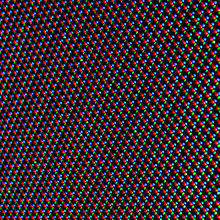
Back Светодиоден дисплей Bulgarian এলইডি ডিসপ্লে Bengali/Bangla Pantalla LED Catalan LED obrazovka Czech LED-Display German Pantalla led Spanish LED-ekraan Estonian نمایشگر الئیدی Persian LED-näyttö Finnish Pantalla LED Galician


A LED display is a flat panel display that uses an array of light-emitting diodes (LEDs) as pixels for a video display. Their brightness allows them to be used outdoors where they are visible in the sun for store signs and billboards. In recent years, they have also become commonly used in destination signs on public transport vehicles, as well as variable-message signs on highways. LED displays are capable of providing general illumination in addition to visual display, as when used for stage lighting or other decorative (as opposed to informational) purposes. LED displays can offer higher contrast ratios than a projector and are thus an alternative to traditional projection screens, and they can be used for large, uninterrupted (without a visible grid arising from the bezels of individual displays) video walls. microLED displays are LED displays with smaller LEDs, which poses significant development challenges.[1]

- ^ Reynolds, Daniel (2021-10-28). "An Introductory Guide to LED Display Technology and its Uses & Benefits". Dynamo LED Displays. Archived from the original on 2022-02-19. Retrieved 2022-02-19.
© MMXXIII Rich X Search. We shall prevail. All rights reserved. Rich X Search